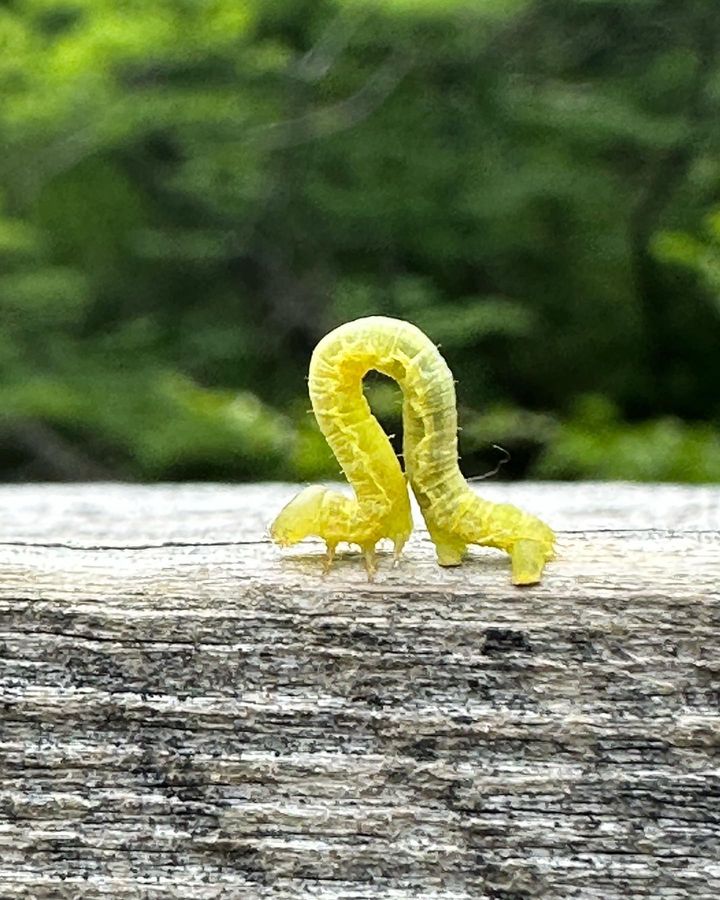Do you know Hackberry Tree Worms are also called inch worms, as the caterpillar is just 1 inch long? These tiny creatures can cause devastating loss to your trees.
Hackberry Tree Worms, also called Canker Worms, contains true legs on the front and prolegs on the back. The empty space in the middle helps them to make an arc to crawl.
So, this article serves you every detail about Hackberry Tree Worms, their effects, and the failproof ways to control these nasty worms.
Table of Contents Show
What Do Hackberry Tree Worms Look Like?
Hackberry Tree Worms are the larvae of Sawfly, a moth-like insect. The larva has a cylindrical body with a brownish head and a cream-colored body.
The body is only 1 cm long, and the worm contains 6 legs with 2 antennas on the upper portion of the head.
As the body is cylindrical and the legs are short, they turn into arcs and draw themselves forward with the help of short legs to move.

Basically, the worms feed on hackberry leaves, but you can also find them on trees like Elm, Maple, Oak, Apple, etc.
Moreover, these larvae prefer warm climates, and you can see them actively crawling in spring and summer.
However, in the freezing cold winter temperature, they stay dormant as eggs until the temperature turns warm.
As the temperature warming during spring, they turn into a pupal stage where the larvae hide under the cocoon under the leaves and branches.
Thus, when the new leaves mature during summer, the larvae get enough food for themselves.
Effects Of Hackberry Tree Worms
Hackberry worms feed on the leaves of Hackberry and other important trees in your garden, making them look nasty.
These worms are most common in the Eastern United States, but you can also find them if you stay in Midwest and South.
Although small numbers cause no significant effect on trees, the large population may be extremely dangerous to your Hackberry trees.
- The tree starts to look unappealing as the worms feed on the leaf tissues and leave the veins behind.
- Moreover, the wounded leaves also turn brown, leading to premature leaf fall.
- Hackberry worms feed on the leaves of trees, which makes them unable to photosynthesize. Gradually, the tree becomes weak due to a lack of energy.
- Furthermore, the weak tree becomes more susceptible to pests and diseases.
- If Hackberry worms feed on the diseased leaves, they can spread the disease to other leaves. Eventually, the disease spreads to the whole tree.
- The defoliated trees take a very long time to recover. This makes them susceptible to repeated worms attack too.
How To Get Rid Of Hackberry Tree Worms?
Getting rid of Hackberry Tree Worms depends on how severe the infestation is. You can manually pick the worms if the population is very low.
However, you will need the professional arborist if the tree is severely infested by these worms.
- If the infestation is in the early stage, prune the leaves and branches to remove the worms manually.
- You can also remove the leaves with your hands or pick the worms or eggs off the leaves if they are on only a few branches.
- In severe infestations, apply suitable insecticides or neem oil to get rid of those worms.
- Use natural predators that feed on larvae to get rid of these worms naturally.
- Biological control methods using bacteria, nematodes, fungi, etc., will also work in an environment-friendly way.
While getting rid of these pests, water and fertilize the tree regularly to make it healthy. The healthy tree becomes less susceptible to pests and diseases.
From Editorial Team
More About Hackberry Tree Worms!
The female Hackberry moth lays the eggs on the Hackberry leaves, and the eggs hatch into larvae that feed on the leaves for about 2 weeks.
After 2 weeks, the larvae turn into cocoon or pupa and stay without moving again for 2 weeks. The pupa then gives out a moth with wings, and the cycle continues.
